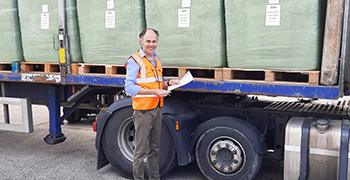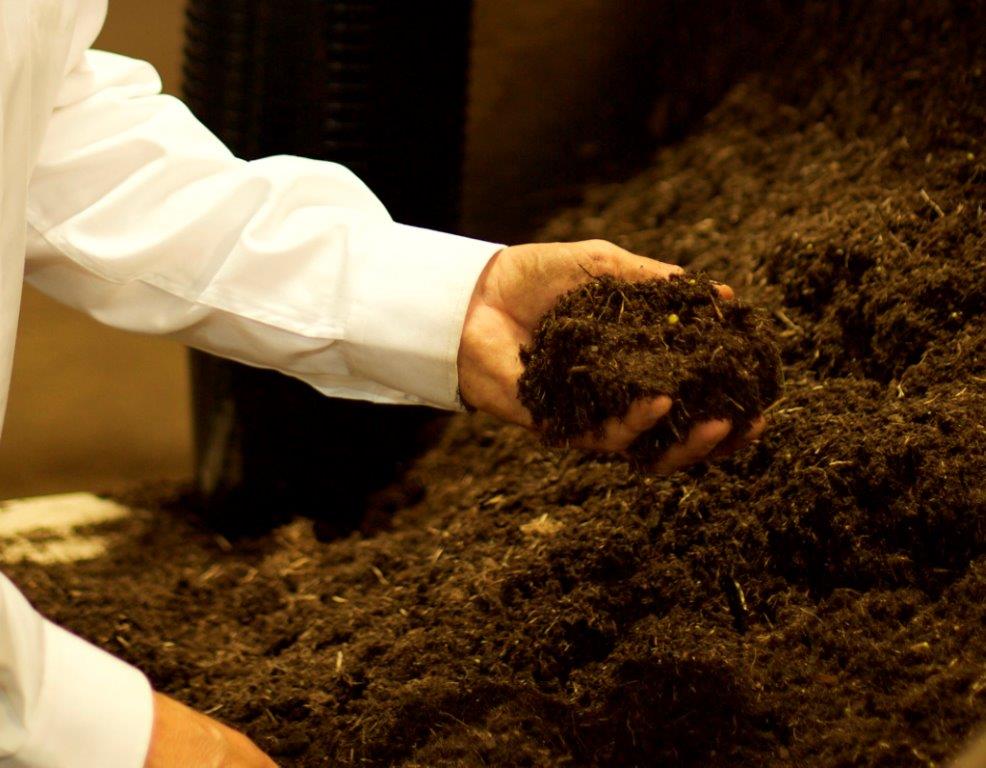While semi-bulk handling systems have simplified and improved growing media storage for many growers, Brendan Howell - ICL sales development manager for Ireland - explains why it’s still important for all growers to store product correctly and pay close attention to use by dates.

Growing media for commercial horticulture was originally sold in bags or bulk. Bags offered simplicity. Usually containing a standard peat-based product with no additives, the media was sealed away from potential contaminants. As such, they could be stored almost anywhere for up to a year.
In contrast, bulk was the complete opposite, often exposed to the elements and a range of potential contaminants it also often contained additives – such as controlled release fertilizer (CRF) and, later, Intercept (replaced by Exemptor).
At the other end of the scale, there were purpose-built bays with growing media harvesting equipment. More recently these have evolved into computer programmed units that identify where one load finishes and the next starts – helping ensure the media is automatically rotated.
Semi bulk resolved many storage issues
The move to semi bulk handling systems has seen many storage issues automatically resolved.
Big bales, or even bulk bags, offer good protection from the elements as well as wind borne seeds. However, once opened, growers should take care as the growing media is exposed and needs protecting. Individually labelled, these systems have made stock rotation easier to control.
Even so, the basic principles still apply. Growers need to understand how to store and when to use growing media; this includes awareness of use by periods and the effects of CRFs, controls, biologicals, biostimulants and sustainable raw materials.
Bulk bulk - how to maintain quality
Bulk product should only be stored on sound, well drained concrete and preferably under cover.
Rain damages growing media structure and adds significant weight, making it challenging to handle. Leaving media exposed to weather, surface rain or run off from fields should be avoided. Left uncovered it is exposed to weed seeds, air borne spray residues and potentially damaging insects and animals.
When storing in bays, avoid unused material being left at the back. Try to use up all existing product before a fresh load is delivered or remove and rotate to the front, once the new load is dropped.
Take note of use by dates
Be aware of, and follow, use by dates – they are there for a very good reason.
CRFs start to release once the environment contains sufficient moisture and reaches a certain temperature. Particularly with shorter longevities or higher rates, over time the EC also starts to increase which can potentially damage young roots.

21 days remains good guide
Of course, the rate, longevity, temperature, moisture content and other fertilizers - such as base feed or calcium nitrate - will differ, impacting the storage period. However, 21 days is a good guide and is the point ICL ends any legal responsibility - regardless of additional actions taken by the grower to increase storage longevity.
With CRFs, temperature is one of the most influential factors. It is extremely hard to adjust once the growing media is mixed, as peat and peat-free raw materials have high insulating values. As such, if a probale is manufactured in summer - when materials are warm - moving it into a cold store will have little, or no, impact on core temperature in the short to medium term.
Non peat raw materials
As we transition to more ‘sustainable’ raw materials, there are additional storage considerations. Wood based products, such as bark and some woodfibre products, draw down N over time and others may have higher initial ECs. We therefore recommend using these products as soon as possible. ICL update storage and use by periods to account for these factors.
Consider load size and delivery options
We all want to maximise load sizes, for cost effective and environmental reason. However, particularly with peat-free products, consider what you need and how long you need to store it. A smaller load size can appear more expensive, but in the long run may be more cost effective.
What to do if use by date has passed
Growing media is a major investment and nobody wants to see it go to waste. If in doubt, consult ICL for advice.
Generally, we recommend taking samples for analysis - to ensure the product is safe. There may be opportunities to flush nutrient out to minimise risk, however, this should only be done taking into consideration the EC, the crop and its sensitivity. As the CRF will have reduced longevity, additional feed may be required during the cropping period.
Be aware, once the guaranteed use by period has passed – the media is used at the grower’s risk.
Don’t overlook other additives
Increasingly ICL and others are adding controls, biostimulants and biologicals to bespoke mixes. Always consider manufacturer and label recommendations for use and storage within a growing media mix, as long storage periods will have a detrimental effect on product efficacy.
ICL makes this information available in product information and non-standard product disclaimers but, if in doubt, please contact us.
